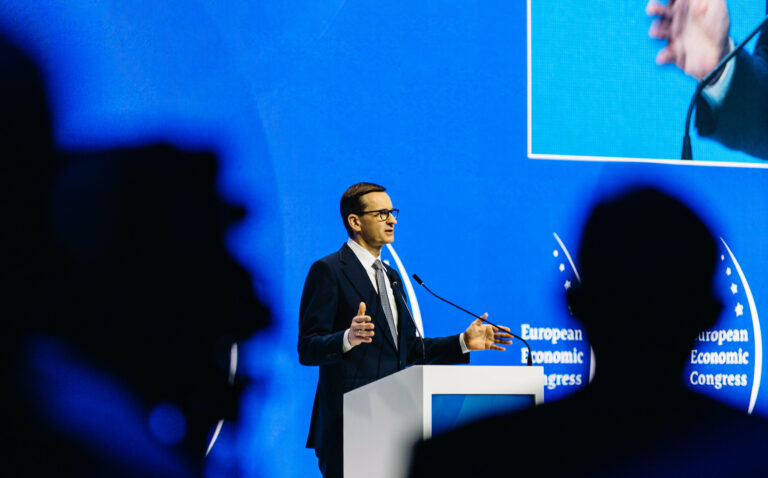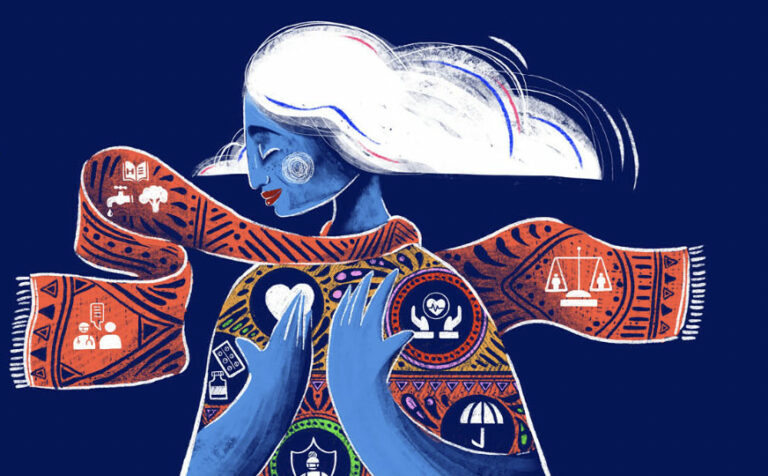
Girl power: from Georgia to the NASA space centre in Houston
Nowadays, girls grow up hearing that we can do anything, be anything. But there are still not enough women in science, technology, engineering and maths – the subjects we call STEM – to create equality.
I always had a question, are there any social and cultural barriers that keep girls from entering STEM subjects? Popularity is one of them. And then there is the pressure to prove themselves in a room filled with men. Sometimes girls aren’t encouraged in the same way as boys, and, when being advised on careers, girls are often told that they give up. From my point of view, I truly believe that having more girls in STEM is not just about their own careers. It’s a missed growth opportunity for the world. It’s missed innovations that only women can bring about with their different skill sets, distinct from those of men.
Before I tell you my own story about my journey in STEM and my innovation, how a 13-year-old girl from Georgia visited the NASA space centre in Houston, there is one thing you need to know: “Every woman has a place at the table when it comes to science. So, don’t let anyone tell you otherwise.”
In 2017, when I was in seventh grade, my school had a STEM club, where we had lessons twice a week. My friends and I worked on small projects and learned programming. It was all new for me, and of course, little Lika was interested from the very beginning. We created devices such as temperature gauges, we worked on LED lighting and used 3D printers to print volumetric figures. At first, it felt like we were playing, but then when we took a more serious look at programming, we approached it with more understanding and received new information every day. For motivation, we organised an exhibition with these small projects at school and then won regional competitions. The first such competition was a hackathon, where my friends and I won prizes. Of course, we were very happy and we wanted to participate in such projects, where we would get to know successful people in this field, with whom we would have the opportunity to talk.
This is where one of the most important stages in my life begins. In 2017, the Millennium Innovation award competition was announced, for which the school had to put together a team of 5 members, who would develop an innovative project, present it at this competition, and then the winning team would go to the NASA Space Centre in the United States of America.
Though I so much wanted to be in the top five, my classmates were so good that I thought it would stay a dream. And I cheered for my friends because each of them deserved this great experience. You can’t imagine how surprised, happy and motivated I was when I found out that I was one of the five students to be chosen. Girls, always remember – to accept your dreams and follow them! But the most important part comes next. How many boys and girls do you think we’re in this team? Maybe you’re thinking four boys and one girl, or three and two, but no. It may sound unbelievable, but there were four girls and one boy in our team. And by the way, this caused a lot of surprises throughout the competition, both among the jury members and the other participants.
After forming the team, it was time to think about our innovative project idea. We’d had serious floods the previous summer, which, among others, had damaged the bridge in front of our school. So we decided to work on a notification system for landslide zones. This was a tool to warn people about the danger of an approaching landslide, sending out a message in case of danger. Our project was innovative because we used a hollow sensor that had not been used in landslide zones for any device. Our project also had an application and we could set the margin. When the rockslide exceeded a certain limit, a message would automatically be sent to the registered population. Teams with several years of experience were taking part in the project, and we were novices compared to them. There were assessments from their side that disappointed us on some issues, but we never gave up. We were a united team and we always had confidence in ourselves. We knew that all that hard work with our mentors would pay off. And here is one more piece of advice from me- self-confidence, hard work and moderate humility will always earn you success.
Our project was really interesting and we expected to be in the top three, but the first place was within our reach. Jury members and people interested in our project noted that it was rare to have so many girls in one team, and we enjoyed it. But when the awards began to be announced, we lost hope, because we were not third, nor second. But then our team was announced as the winners, we fired up, one of our team members went up on stage and we girls couldn’t believe that our team had actually been chosen. We couldn’t believe that this dream would become a reality. Even now, when I talk about that moment I still get the same feeling and I want to go back to that day even more.
So we went to the NASA Space Centre, where we faced even bigger challenges. First of all, the language problem: not all of us knew English very well, there were also students from another country and we had to communicate with them. But even there we had hope for each other and together at the Space Centre university, we won prizes for two projects. In addition, we had the opportunity to meet and interview a cosmonaut, John David F. Bartoe. It was truly the experience of a lifetime and I will always remember the week I spent there.
If you are wondering how I am involved in STEM today, I will tell you about it in a few words. Today, I am studying international relations. Yes, it is really far from this field, but in the end, I had to make a choice, which wasn’t easy for me. The good thing is that I have not cut ties with my school and I help those students who are trying to create new innovative projects. In my team, I was responsible for the visual side of the project as well as the presentation, so I can always give them advice in this direction and help as much as possible. When I’m in my city, I visit them and I can listen to their presentations through direct communication, but we also manage everything online.
And most importantly, I always promote projects that give a chance to pupils and students a to create something interesting, find the strength and courage in themselves to engage in new projects and gain experience abroad. And I think my past experience at NASA motivates young people not to give up and to do everything they can to achieve this goal.
To sum up, what I can say is that STEM is not a boy’s or girl’s game, it’s everyone’s game. During my experience, I learned to always take on things I’d never done before. Just don’t doubt yourself. Of course, you cannot be afraid of programming and maths. But as pioneering American astronomer Maria Mitchell told us, it’s not all mathematics, nor all logic, but somewhat beauty and poetry as well. Today is a new era for women, so we will always have STEM with us. Just don’t be afraid to move forward, to try something new in your life. Remember, it is a chance to build something better this time.
LATEST

Four Ukrainian women: stories of courage and greatness

The Lost Generation

How you can help the planet every day

Building Europe: Poland’s experience of joining the European Union and lessons for Ukraine

World Health Day 2024: My Health, My Right
More campaign pages:
Interested in the latest news and opportunities?
This website is managed by the EU-funded Regional Communication Programme for the Eastern Neighbourhood ('EU NEIGHBOURS east’), which complements and supports the communication of the Delegations of the European Union in the Eastern partner countries, and works under the guidance of the European Commission’s Directorate-General for Neighbourhood Policy and Enlargement Negotiations, and the European External Action Service. EU NEIGHBOURS east is implemented by a GOPA PACE-led consortium. It is part of the larger Neighbourhood Communication Programme (2020-2024) for the EU's Eastern and Southern Neighbourhood, which also includes 'EU NEIGHBOURS south’ project that runs the EU Neighbours portal.

The information on this site is subject to a Disclaimer and Protection of personal data. © European Union,